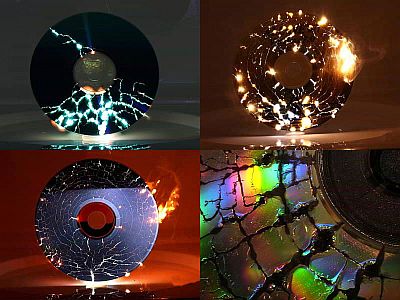How to make rainbow-coloured chocolate

Optical Chocolate - Making Diffraction Gratings - YouTube
Diffractive Chocolate |
https://wp.optics.arizona.edu/oscoutreach/diffractive-chocolate/
Sunlight appears white because it is a mixture of countless colors of light, so when light is reflected in a way that breaks down that white light, it appears rainbow-colored. When white light is shone onto a diffraction grating , as shown below, the reflected light appears rainbow-colored.
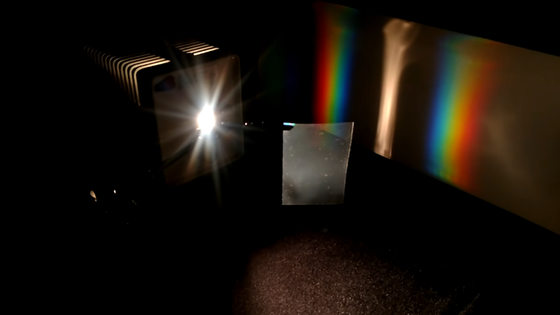
The mechanism for creating rainbow-colored light from a diffraction grating can be seen in a movie by
Using Quantum Mechanics to Make Holographic Rainbows on Chocolate - YouTube
If you shine a red laser on a piece of black paper with evenly spaced holes in it, the light will pass through the slits and be dispersed as it travels to the screen.
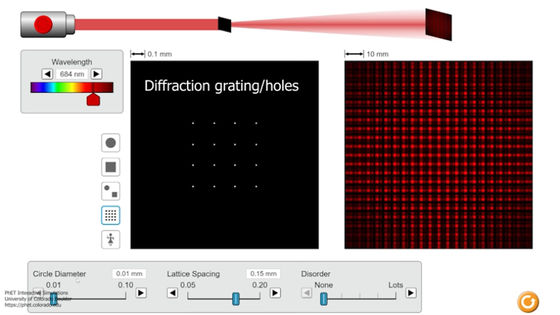
Adjusting the distance and positioning of these slits will naturally change the way the light appears on the screen.

What's interesting here is that even if the distance of the slit is fixed, changing the color of the light changes the width of the light projected onto the screen. This is because the color of light is related to its wavelength, and the behavior of light as it passes through the slit differs depending on the wavelength.

Even if red and blue light are directed at the exact same position on a diffraction grating, the blue and red lights displayed on the screen will be misaligned due to the difference in wavelength.
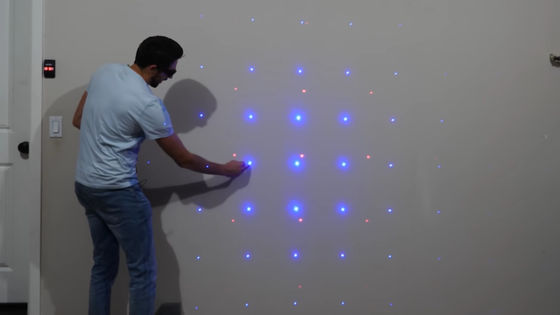
White light is made by layering
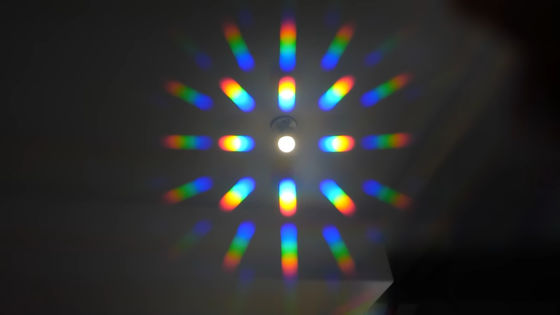
The back of a CD shines in rainbow colors because white light hits a complex surface, diffracts, and disperses into each color. In other words, if the shape of the light that diffracts and disperses can be reproduced on the surface of chocolate, it is possible to create 'chocolate that shines in rainbow colors.' So Tech Ingredients prepared a stove, boiler, heat-resistant spatula, thermometer, silicone mold, chocolate for melting, and a 'diffraction sheet' that reflects light in rainbow colors. The diffraction sheet is not used as it is, but is used as a chocolate mold to copy the 'surface shape of the diffraction sheet' onto the chocolate.

Tech Ingredients first creates rainbow-reflecting candies by pouring molten sugar, caramel, and other ingredients onto a diffractive sheet. Transparent candies can be relatively easily imprinted with the surface of the diffractive sheet.
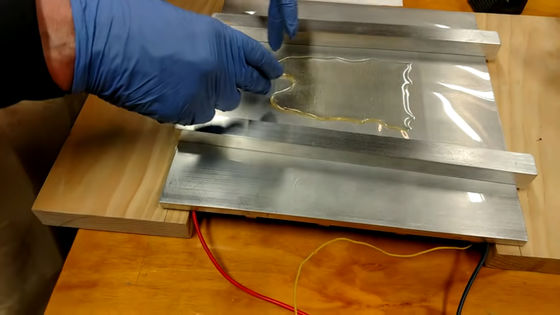
On the other hand, doing the same thing with chocolate requires a slightly more complicated technique. Temperature control is very important with chocolate. It can be made easier by mixing crystalline ingredients into the chocolate, but at Tech Ingredients we want to make the purest chocolate shine as much as possible, and to achieve this we need to
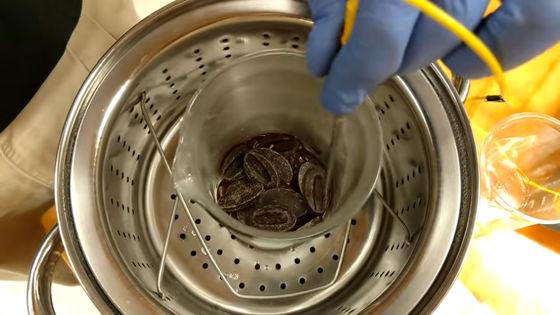
After melting a portion of the chocolate completely, add solid chocolate and gradually lower the temperature. This stabilizes the crystalline structure of the chocolate while liquefying it. Here, we adjust the temperature so that the melted chocolate is uniform and does not exceed 90 degrees.
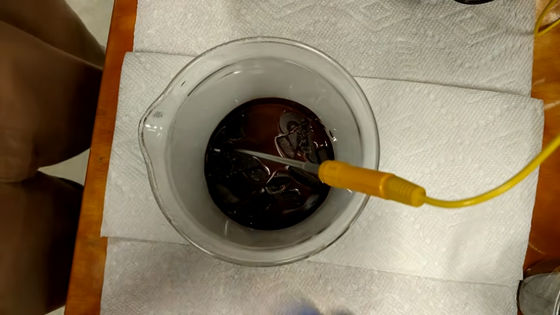
The diffraction sheet is then dipped into the melted chocolate. After cooling, the chocolate is removed from the sheet, creating 'chocolate with the same surface structure as the diffraction sheet.'
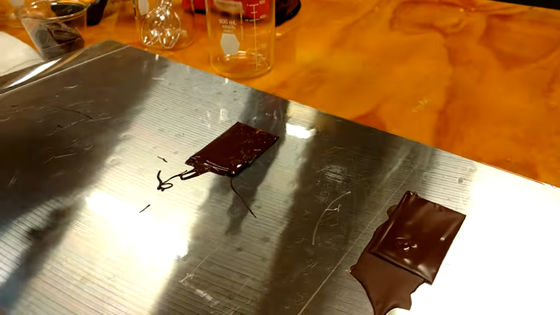
Here is what it looks like after it has cooled. First of all, you can see that the transparent candy reflects light all over, giving it a rainbow-like shine.
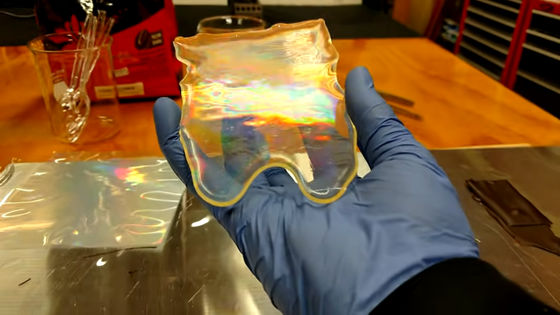
Unlike candy that is simply spread thinly on a diffraction sheet, cooled chocolate that is wrapped around a diffraction sheet must be carefully peeled off the sheet.
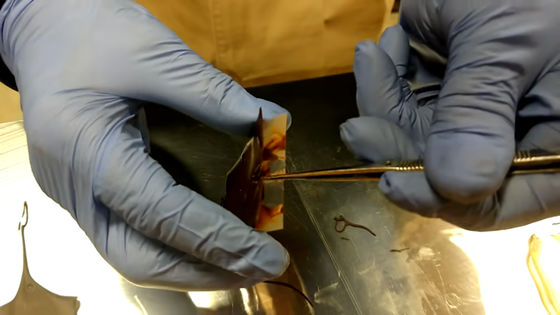
When peeled off the thin chocolate sheet, the light reflected off the surface in a rainbow of colors.
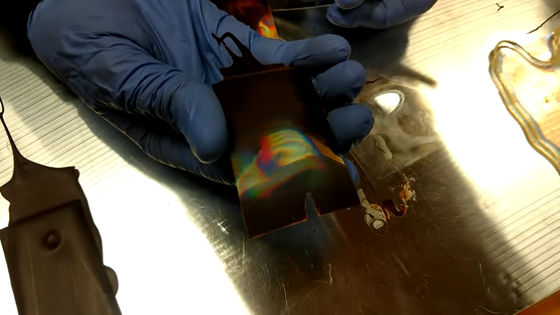
Since no chemical substances are used to make the chocolate glow, you can eat the glowing chocolate without any problems.
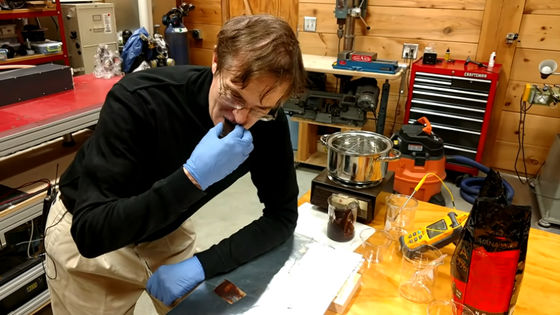
On Hacker News, where this movie became a hot topic, the question was raised: 'If no extra ingredients or chemical substances are needed (the taste doesn't change), why don't chocolatiers use iridescent chocolate to create unique works?' In response to this, problems such as 'diffraction phenomenon is difficult to apply because it can only be applied to flat, non-curved surfaces' and 'because chocolate melts easily, the diffraction effect should disappear quickly by the time you take it home from the store' were pointed out.
Related Posts:







